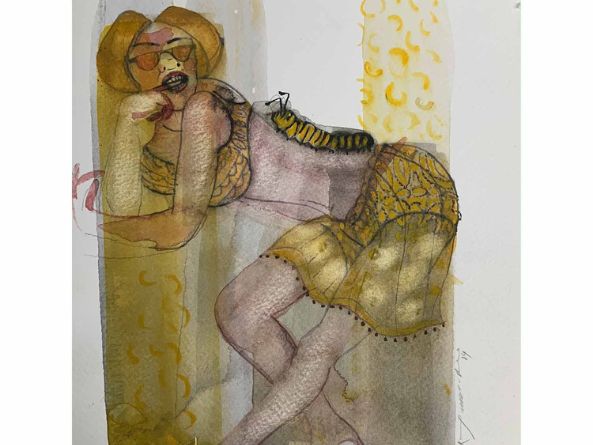The Psychology of Art: How Paintings Influence Mood & Energy

The Psychology of Art: How Paintings Influence Mood & Energy
To walk into almost any appropriately configured art gallery is to immediately notice something beyond all the color and canvas—a not inherently conscious change in atmosphere. You may even feel it to be a calmness or another form of vitality. This is not a figment of your imagination; it is pure psychology. Paintings can uniquely influence our feelings and perceptions of spaces and ourselves.
Art is not simply meant for visual enjoyment—it provides an often unconscious communication with the self or the conscious mind. Each hue, stroke, and glyph carries with it energy that penetrates space and us.
Art as Emotional Architecture
Think of paintings as emotional architecture. Where walls affect space and are exhibitors of the art of architecture, the art in a room will define feeling. A minimalist bedroom with a bright pop painting will occupy a very different psychodynamic state than a large soft watercolor that takes up the entire wall. The vibrant art seems joyful, playful, and creative; the other seems still and serene.
The psychology of color has its role here. Bold reds and oranges stimulate energy and passion, and cooler tones—blues and greens—instill balance and contemplation. Figurative painting can also create intimacy. When a figurative piece is able to capture expression or action, it causes us to subconsciously mirror that feeling in ourselves, bringing a sense of closeness through empathy.
Stories in Symbolism
The human brain seeks stories, and art is full of stories. A canvas is more than pigment on the surface; it is a quiet narrative alongside the visual. But the importance of the story is especially resonant in works based on culture and mythology. For example, Indian mythology paintings are not only beautiful to look at but also charged with potent emotion.
Mythological works often present gods, epics, and allegories that carry deep meaning: power, protection, and devotion. When a piece like this is placed in a space, one isn't only getting a beautiful art piece but also energy and symbolism that goes back centuries. Standing before such a canvas means absorbing archetypes that have shaped human consciousness for generations. It can fill a room with gravitas, giving it a sense of sacredness, purpose, and timelessness.
Creating Energy Balance Using Creative Art
There is a certain balance required of every space. Space can feel over-stimulating, and too little can feel cold or sterile. Art is the connector of that balance. Appropriate wall art can create proportionality, harmony, and mood.
Imagine modern pop painting inserting playfulness into corporate spaces. A large neon splash or comic-style piece is sure to break the monotony of mundane décor. Similarly, a vibrant figurative painting can coax warmth into contemporary architecture, grounding the environment and energizing people who occupy it. Different works, different tones—but both balance energy beautifully.
Art as Personal Reflection
What we choose to hang is often a reflection of who we are, or who we want to be. A home filled with Indian mythology paintings conveys cultural pride and reverence for tradition. A workspace filled with abstracts or playful contemporary works reflects innovation and rebellion.
This is the quiet power of art: it is an expression of identity. Surround yourself with art that uplifts you, and your rhythm of life will align with that energy. It is not a coincidence—this is the subtle psychology of visual impact.
The Luxury of Living With Art
Luxury is not always defined by a marble floor or a crystal chandelier. Sometimes, the luxury is simply the art that elevates a space from ordinary to extraordinary. Every canvas chosen at Kadari Art Gallery is understood to be both a luxury and a necessity. It is a daily investment in beauty, and that can be just as vital for emotional well-being as anything else.
The right piece doesn’t just fill wall space; it shapes it into an experience. Whether it’s the cultural weight of Indian mythology paintings or the playful exuberance of a pop painting, both create layered luxury that few other design elements can replicate.
Frequently Asked Questions (FAQs) : The Psychology of Art and Mood
1. In what way does art influence mood?
Art interacts directly with our subconscious. Colors, shapes, and themes generate emotional reactions: calming, joyful, energizing, and focusing. The right painting can completely shift the atmosphere of a room.
2. Can a painting actually help me lower stress?
Definitely. Research indicates tranquil works—like landscapes or soft-toned figuratives—can reduce stress. Watching brushstrokes or symmetry creates a meditative effect.
3. Why are Indian mythology paintings so powerful?
They are layered with centuries of tradition, symbolism, and archetypes. Depictions of gods, heroes, and epics resonate with universal truths, often creating a sacred and protective atmosphere.
4. What kind of painting works well in a modern home?
It depends on the mood you want. A bold pop painting brings vibrance and joy. A figurative painting adds warmth and intimacy, making it perfect for both living spaces and stylish workspaces.
5. Is collecting art a luxury or a necessity?
It’s both. Art beautifies a space (luxury) while also influencing mood, energy, and emotional well-being (necessity). It’s one of the most enriching investments you can make.
In Closing
Art affects us in ways we rarely articulate. It’s there in the calm of a portrait, the delightfulness of color, and the weight of cultural narratives. Whether you are decorating a home, a workplace, or a public setting, remember: art is not just what you see, but what you feel—and the impression it leaves lingers long after you walk away.









